プロジェクトProjects
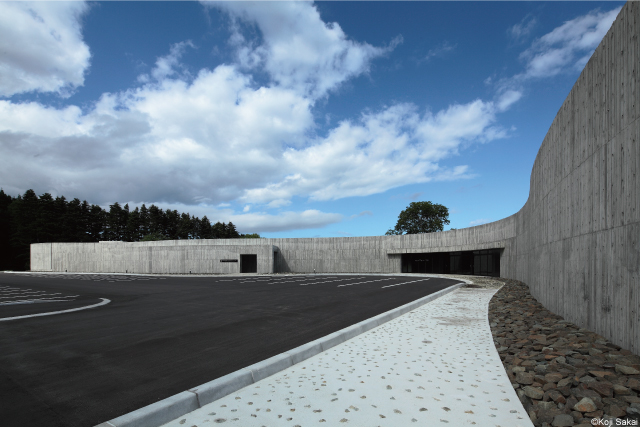
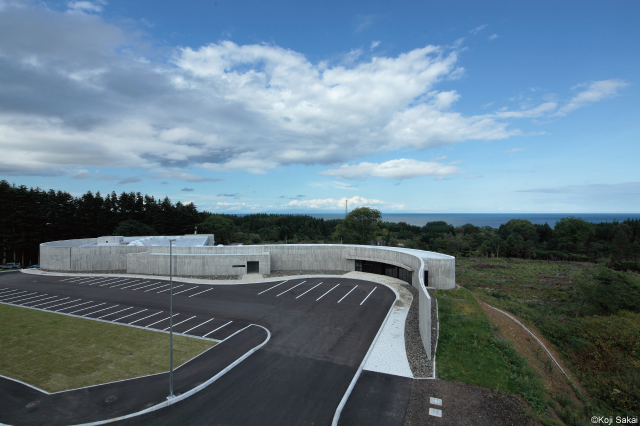
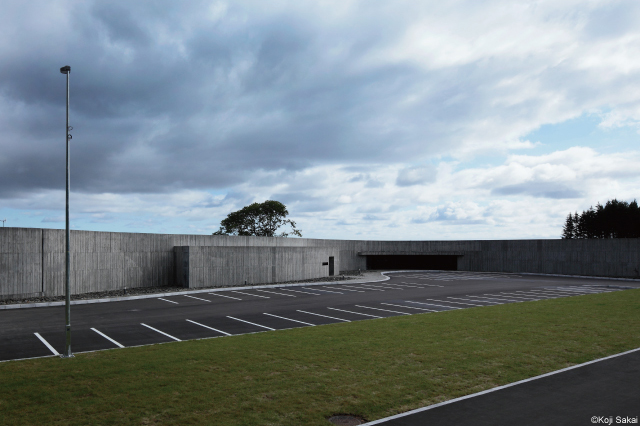
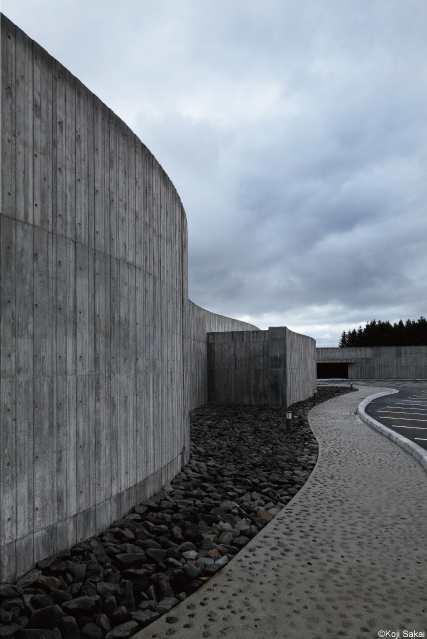
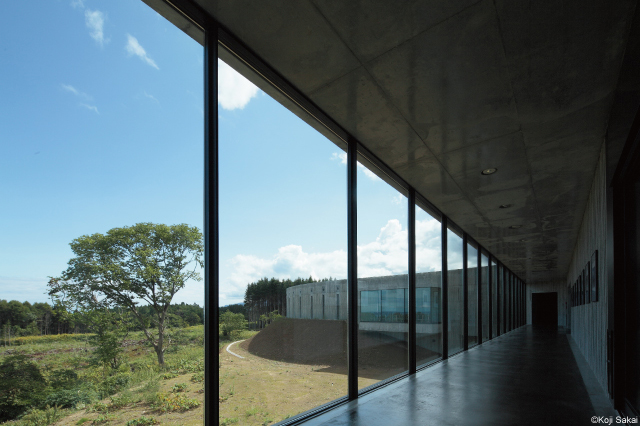
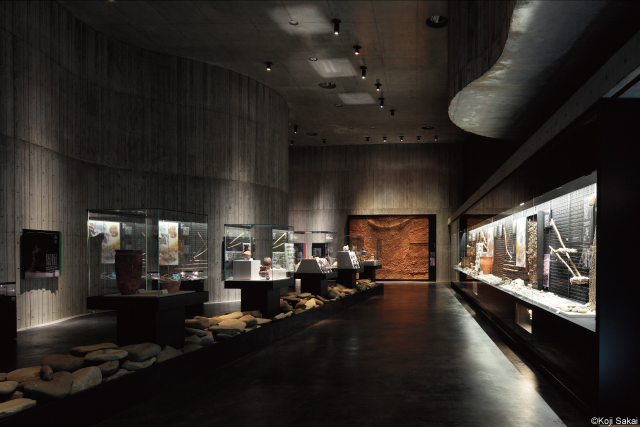
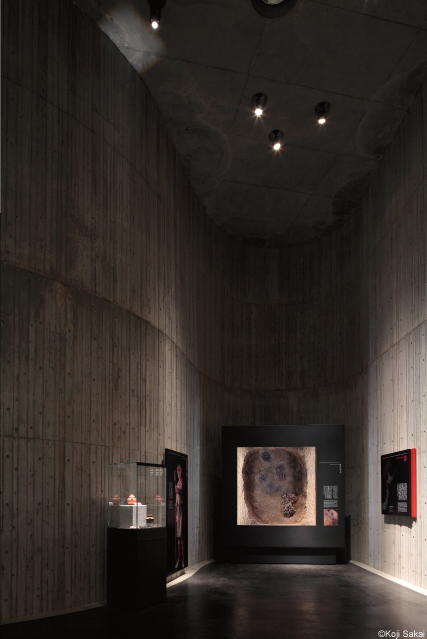
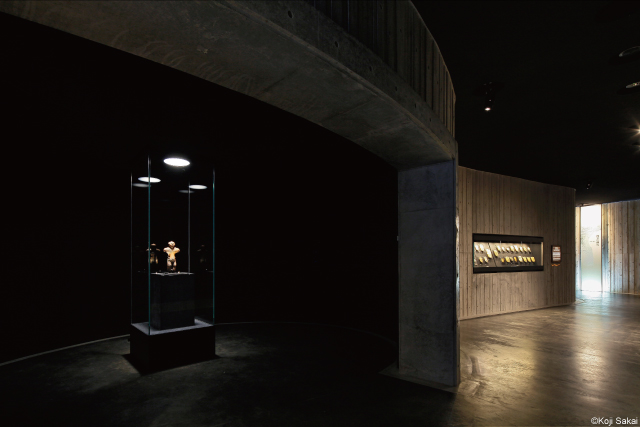
函館市縄文文化交流センター
2011
北海道函館市
構 造:鉄筋コンクリート造
階 数:地上2階
延床面積:1,733㎡
金箱構造設計( 構造設計 )
アトリエブンク + 総合設備計画( 設備設計 )
乃村工藝社( 展示計画 )
アトリエブンク + GTアドヴァンス( 外構設計 )
約一万年にわたり豊かな精神性をもつ社会を維持した縄文文化は、同時に親自然性を特徴とするサスティナブルな文化であり、環境問題に直面する我々が参照すべき社会モデルとして世界的に注目されている。設計にあたってはこの「縄文のこころ」と交感する場所を目指し、縄文文化を生み出した細やかな手の痕跡、緩やかな曲線、質朴な素材と原理的な表現などを手がかりに空間を組み立てた。
平面的には大きな曲率をもつ長さ200mの壁を基線とし、現代(バイパス)と縄文時代(垣ノ島遺跡)を分ける結界をつくりその遺跡側に主要な機能を配した。特に重要な展示室は、緩衝空間に内包された入れ子状として温熱環境の安定化を図った。断面的にはバイパスレベルの玄関から入り、一層下の垣ノ島遺跡のレベルにある展示室に導く構成とすることで、遺跡と一体化する展示室としての空間演出を考えた。
建物は内外ともに可能な限りコンクリート打放しとした。曲面壁は、厚みと巾をランダムに変えた道南杉の小巾板を600mm巾の普通型枠に貼り付けることで、滑らかな曲面を経済的に構築した。木目が転写したコンクリートはひとつとして同じ表情がなく、『茅空の家』にふさわしい手仕事によるあたたかさと精巧さを獲得している。
公共建築協会公共建築賞優秀賞
B1 Magazine
ArchDaily
Archello
hhlloo
Hakodate Jomon Culture Center
2011
Hakodate-shi, Hokkaido
Structure:RC
Floor:2 floors
Floor Area:1,733㎡
Kanebako Structural Engineers( Structural Design )
Atelier BNK+Sogo Consultants( Mechanical & Electrical Engineering )
NOMURA( Exhibition Planning )
Atelier BNK+GT Advance( Landscape Design )
For around 10,000 years in Japan, the Jomon culture maintained a richly spiritual society and was a sustainable culture characterized by a closeness to nature. Today, as we confront environmental problems, the Jomon culture is attracting worldwide attention as a model of society from which we can learn. Our design of this center aimed to create a space that communicates the “Jomon spirit,” guided by the traces of delicate hands, gentle curves, simple materials, and fundamental expression that produced the Jomon culture.
The baseline of the plan was a 200-meter long wall of large curvature that creates a barrier dividing the present day (the highway) from the Jomon period (the Kakinoshima site) and assigns the primary function to the site. The exhibition rooms are particularly important places inside the center, and the thermal environment in these rooms was stabilized by nesting them within a buffer space. The spatial representation integrates the exhibition rooms with the site through a cross-section that guides the visitor from the entrance on the highway level down to the exhibition rooms on the Kakinoshima site level.
The building was given an exposed concrete finish wherever possible both inside and outside. The smooth curved surface of the walls was constructed economically by fixing narrow planks of cedar of varying thicknesses and widths into regular 600 mm-width formwork. With the grain of the wood transferred to its surface, the concrete shows an expression that is never repeated and acquires a warmth and delicacy. The manual work that produced this effect seems particularly appropriate in this center that is home to the clay figurines of the Jomon culture.
Public Building Award, Excellence Prize
B1 Magazine
ArchDaily
Archello
hhlloo
